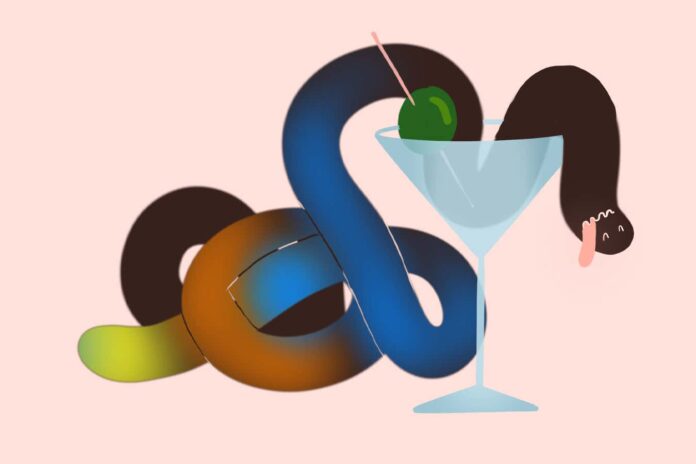
Ten unexpected things were honoured at the 34th Annual Ig Nobel prizes today, each so extremely surprising that, in the event’s long tradition, it makes people laugh, then think.
The awards gala happened at the Massachusetts Institute of Technology, in a lecture hall filled with paper airplanes thrown by audience members respectful of the Ig Nobel tradition of recycling paper by bringing it along and turning it into disposable aircraft.
Peaceful pigeons
This year’s Ig-winning achievements span a wide range of human, botanic and other behaviour, some of it avian.
Before one commits to using live pigeons to guide the flight paths of missiles, one might want to do experiments to learn the feasibility of housing them inside a missile nose cone. In the 1940s, psychologist B. F. Skinner undertook such experiments. He was awarded, posthumously, this year’s Ig Nobel peace prize.
Skinner’s daughter Julie attended the ceremony, where she accepted the prize on his behalf. B. F. Skinner was a giant in the field of behaviourism. Years after the pigeons-in-a-missile experiments, he wrote: “Something happened during the brief life of Project Pigeon which it has taken a long time to appreciate. The practical task before us created a new attitude toward the behavior of organisms.”
Plants’ sense of style
A similar major readjustment of attitude could result from the work of 2024’s Ig Nobel botany prize winners Jacob White and Felipe Yamashita. They found evidence that some real plants imitate the shapes of neighbouring artificial plastic plants. Details appear in their study “Boquila trifoliolata mimics leaves of an artificial plastic host plant”.
Marjolaine Willems and her colleagues collected the anatomy prize, for studying whether the hair on the heads of most people in the northern hemisphere swirls in the same direction (clockwise or counterclockwise) as hair on the heads of most people in the southern hemisphere.
Details of that are in their paper “Genetic determinism and hemispheric influence in hair whorl formation”.
Passing wind
Countless metaphors and turns of phrase relate to the research that earned the physiology prize for Takanori Takebe and his colleagues. The team discovered that many mammals are capable of breathing through their anus.
Persistence paid off for the probability prize winners František Bartoš, Eric-Jan Wagenmakers, Alexandra Sarafoglou, Henrik Godmann and about 50 colleagues, many of them students. Together they showed, both in theory and by 350,757 experiments, that when you flip a coin, it tends to land on the same side as it started.
Painful placebos
Lieven Schenk, Tahmine Fadai and Christian Büchel copped the medicine prize for demonstrating that fake medicine that causes painful side effects can be more effective than fake medicine that doesn’t cause painful side effects.
(Their study brings memories of, but doesn’t explicitly cite, a paper by Dan Ariely and his colleagues that won the 2008 medicine prize for demonstrating that high-priced fake medicine is more effective than low-priced fake medicine.)
Jimmy Liao was awarded the physics prize, for demonstrating and explaining the swimming abilities of a dead trout. In a series of papers he writes about discovering this unexpected aspect of fluid dynamics.
Drunk worms
Worms can be sober. Worms can also, if they imbibe alcohol, become sloshed. Tess Heeremans, Antoine Deblais, Daniel Bonn and Sander Woutersen won the Ig Nobel chemistry prize for devising a method to use chromatography to separate drunk and sober worms.
A prize for research in demography — the statistical study of human populations — went to Saul Justin Newman for his detective work as to whether demographers notice important details. Newman discovered that many of the people famous for having the longest lives lived in places that had lousy birth-and-death recordkeeping.
Newman wrote two papers about this. He gave each a title that tidily explains how conclusions get leaped to. One is called “Supercentenarians and the oldest-old are concentrated into regions with no birth certificates and short lifespans”. The other is “Supercentenarian and remarkable age records exhibit patterns indicative of clerical errors and pension fraud”.
This year’s collection of Ig winners finishes with a bang. Fordyce Ely and William E. Petersen were posthumously awarded the biology prize for an experiment they did in the 1940s. The duo exploded a paper bag next to a cat that was standing on the back of a cow, to explore how and when cows spill their milk.
Ely’s daughter Jane and grandson Matt came to the ceremony, where they accepted the prize and witnessed a demonstration that involved a toy cat, a human in a cow costume and five Nobel laureates exploding paper bags.
Marc Abrahams created the Ig Nobel Prize ceremony and co-founded the magazine Annals of Improbable Research. Earlier, he worked on unusual ways to use computers. His website is improbable.com.
Got a story for Feedback?
You can send stories to Feedback by email at [email protected]. Please include your home address. This week’s and past Feedbacks can be seen on our website.

